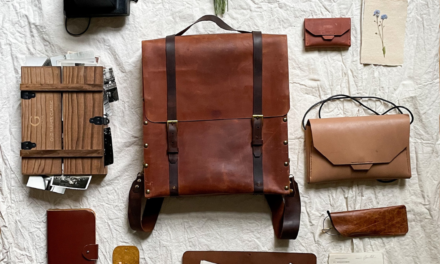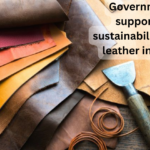Designing kids’ leather shoes requires a focus on both comfort and healthy foot development to support growing feet while ensuring flexibility, protection, and durability. Children’s feet are still forming, so shoes must accommodate natural growth, provide adequate support, and prevent discomfort or developmental issues. Here’s how comfort and foot development are addressed in kids’ leather shoes:
1. Use of Soft and Flexible Leather
Children’s feet need shoes that allow natural movement while being gentle on their delicate skin.
- Soft Leather Uppers:
- Full-grain leather, nappa leather, or suede are used because they are soft, breathable, and mold naturally to the foot’s shape.
- Prevents irritation, blisters, or stiffness that can harm developing feet.
- Flexibility:
- Lightweight and flexible leather uppers allow unrestricted movement, critical for healthy walking and growth.
- Flexibility at the ball of the foot mimics barefoot walking, which is ideal for development.
Why It Matters: Soft and pliable leather provides comfort while promoting natural foot motion and preventing restriction.
2. Proper Fit and Room for Growth
Kids’ shoes must provide ample space for growing feet while maintaining a secure fit.
- Roomy Toe Boxes:
- Leather shoes feature a wide, rounded toe box to allow toes to spread naturally and avoid cramping.
- Prevents foot deformities like bunions or hammer toes.
- Growth Space:
- Shoes are designed with a little extra length (about half an inch) to accommodate growth spurts.
- This avoids frequent shoe replacements while ensuring comfort.
- Adjustable Fastenings:
- Velcro straps, buckles, or elastic laces allow a snug fit while adapting to the foot’s changing size.
Why It Matters: Adequate space and a proper fit ensure growing feet remain unrestricted, reducing discomfort and developmental risks.
3. Lightweight and Flexible Soles
The soles of kids’ shoes must be lightweight, flexible, and supportive to promote proper movement.
- Flexible Rubber Soles:
- Soft and lightweight rubber or EVA soles allow natural bending at the forefoot, mirroring the motion of barefoot walking.
- Non-Slip Design:
- Textured soles provide traction to prevent slipping and falling, supporting confident movement.
- Shock Absorption:
- Cushioned midsoles absorb impact during running or jumping, protecting joints and bones.
Why It Matters: Lightweight soles encourage healthy walking patterns while reducing strain on growing feet.
4. Arch and Heel Support
Children’s shoes must provide gentle arch support and heel stability to aid healthy development without being overly rigid.
- Soft Arch Support:
- While infants and toddlers do not require rigid arch support, older kids’ shoes include light arch reinforcement to encourage proper foot alignment.
- Ensures feet develop strong arches naturally.
- Heel Counters:
- Reinforced, yet soft heel counters stabilize the foot, ensuring correct heel placement.
- Prevents overpronation (foot rolling inward) or misalignment.
Why It Matters: Proper heel and arch support helps prevent foot problems like flat feet or improper gait development.
5. Breathability for Comfort and Hygiene
Kids’ feet sweat more than adults, so leather shoes must provide excellent ventilation.
- Breathable Leather Uppers:
- Natural leather allows airflow, reducing moisture buildup and keeping feet cool and dry.
- Prevents fungal infections and unpleasant odors.
- Moisture-Wicking Linings:
- Linings made of breathable materials (e.g., cotton or leather) absorb moisture and maintain hygiene.
Why It Matters: Breathable leather promotes comfort, prevents excessive sweating, and maintains foot health.
6. Cushioning and Comfort Insoles
Children require shoes with adequate padding to protect their feet during play and physical activities.
- Padded Insoles:
- Insoles made of soft, cushioned materials like memory foam or natural latex provide comfort and reduce foot fatigue.
- Removable Insoles:
- Some shoes feature removable insoles for added customization or orthotics.
Why It Matters: Cushioning reduces impact on developing bones, joints, and muscles, ensuring all-day comfort.
7. Support for Natural Foot Motion
Kids’ leather shoes are designed to support natural movement during walking, running, and playing.
- Flexible Forefoot:
- Shoes bend easily at the ball of the foot, supporting natural toe-off motion.
- Minimal Heel Elevation:
- Low or flat heels ensure proper weight distribution and posture for growing feet.
Why It Matters: Shoes that mimic barefoot motion allow proper muscle development and balance.
8. Lightweight Construction
Heavy shoes can strain children’s feet, so kids’ leather shoes prioritize lightweight construction.
- Thin yet durable leather keeps shoes light without compromising durability.
- Lightweight soles and components reduce foot fatigue, making shoes easy to wear for extended periods.
Why It Matters: Lightweight shoes encourage natural movement and play without tiring young feet.
9. Safety Features
Durability and comfort must be paired with safety features that protect kids’ feet.
- Toe Reinforcements:
- Leather shoes often include reinforced toe caps to protect feet during play.
- Slip-Resistant Outsoles:
- Rubber soles provide grip on various surfaces, preventing slips and falls.
- Rounded Edges:
- Smooth edges and stitching ensure no chafing or irritation on delicate skin.
Why It Matters: Safety features protect kids’ feet during physical activities and reduce injury risks.
10. Minimal Break-In Period
Children’s leather shoes are made with soft leather that requires little to no break-in time.
- Pre-softened leathers ensure instant comfort from the first wear.
- Minimal break-in reduces the risk of blisters or discomfort.
Why It Matters: Immediate comfort ensures kids enjoy wearing their shoes without complaints or pain.
Conclusion
Kids’ leather shoes are carefully designed to address comfort and foot development through the use of soft, breathable leather, flexible soles, and supportive features. By incorporating roomy designs, cushioned insoles, and lightweight construction, these shoes ensure healthy growth while protecting delicate, developing feet. Whether for play, school, or everyday wear, well-designed leather shoes strike a balance between durability, safety, and all-day comfort for children.
Hashtags
#KidsFashion #FootwearForChildren #HappyFeet #StylishShoes #FootwearForEveryOccasion #KidsShoeGoals #HealthyFeetHappyKids #ShoeLove #GrowingFeetHappyFeet #KidsShoeEssentials #SupportiveAndStylish #FootwearForActiveKids #QualityKidsShoes #ComfortableAndCute #FootwearForPlaytime #TrendyKidsShoes #ShoesForEveryAdventure #GrowingFeetDeserveTheBest #KidsShoeCollection #FashionableFootwear #ShoesForLittleOnes














